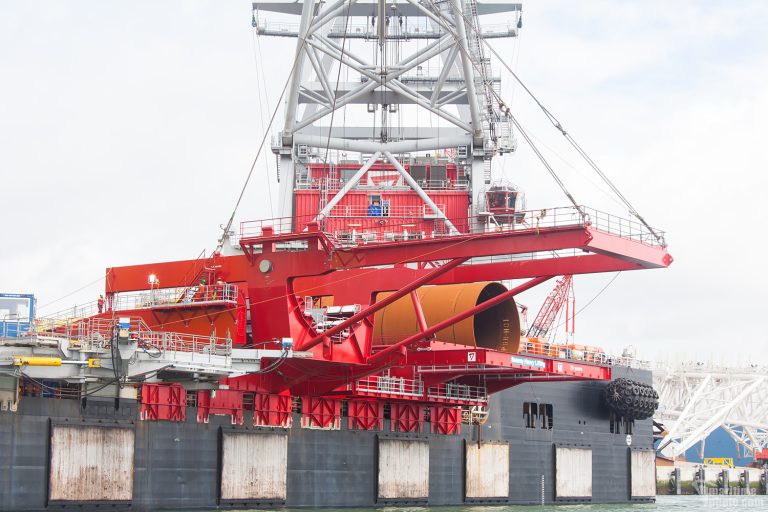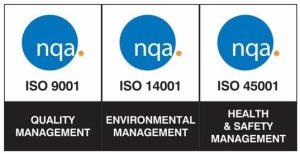In this final part of the series of articles Angelo Vallozzi outlines what is required for successful Vessel Mobilization and recommends best practices to execute and complete this crucial phase in a successful and efficient manner.
How to plan, execute and control the risks of Vessel Mobilization
Key to the success of the vessel mobilization phase is to treat it as a project by itself. It should ideally be initiated in parallel with the onshore engineering, procurement and preparation scope and planned in detail together with the offshore execution phase.
The essential considerations regarding the vessel mobilization “project” are described below, along with some general recommendations on how to minimize or control their negative impacts.

• Resources: the timely allocation of sufficient and capable personnel always plays an important role in how well the project can be managed and completed and the vessel mobilization is no exception. Understanding that resource constraints are a common problem, it is important that at least an accountable person is identified for the vessel mobilization and assigned to it as early as possible.
Preferably this person would be a member of the wider project (T&I) team who has exposure to the full project scope and is able to act as interface with the other scopes. When the actual execution of the mobilization approaches, more resources should be dedicated to it to cope with the rapidly increasing workload and time pressure.
• Scope, Integration: it is easy to say that the goal of the vessel mobilization is to have the vessels ready to sail and execute their offshore activities on time. On the other hand, for all the reasons described in this article, this operation is characterized by multiple moving parts, defined here as “sub-scopes” which might be difficult to control and coordinate. Just to mention a few; quayside preparation and readiness, equipment transportation, equipment testing, construction personnel and equipment availability, vessels arrival at the quayside, etc.
The first step for a proper control of the process is the identification of all these sub-scopes, followed by the evaluation of how critical each of these are for the execution and completion of the vessel mobilization. Once this is done, it is recommended that each sub-scope is clearly assigned to responsible persons, who can manage them, control their risks and ensure their readiness within the vessel mobilization “project”. And once again it is stressed that the integration of all the sub-scopes with the rest of the onshore and offshore activities is a key challenge to always keep in focus.
• Stakeholders, Procurement, Communications: The large number of stakeholders involved is one of the characteristics of a vessel mobilization. The developer, the main T&I contractor, the vessel crew, the port authorities, the Marine Warranty Surveyor, the Sub-contractors hired to perform part of the work such as riggers, scaffolders, welders and crane operators, equipment suppliers, etc. are all taking an active part in the vessel mobilization operations.
This (non-exhaustive) list of stakeholders already gives an idea of the number of disciplines which converge at the same time and towards the same place of mobilization. The task of coordination of most of these parties starts as early as during the Procurement process, where each party is informed of their own obligations with respect to the mobilization. Continuing with the project preparation towards execution, more details are added to the mobilization scope, and it is not unlikely that changes are made.
Finally, during execution of the Vessel Mobilization activities, all parties are required to work together or in parallel in one of the busiest operations of the entire project.
From what is mentioned above, it is evident that having clear organization, objectives and communication – agreed by all stakeholders – is key for the success of mobilization.
Among the multiple tools that can facilitate this, it is recommended that the accountable person maintains and regularly updates a master list of Equipment and Services which are to be provided and executed during the vessel mobilization, including even the smallest of the items or services. If properly maintained, over time this list will become the most comprehensive document, which will greatly facilitate the planning of all the activities, but also their execution and progress monitoring.
• Schedule, Cost: the actual schedule and the actual cost of a project are typically used as metrics to determine if the project has been successfully executed or not. For the vessel mobilization the most important metric is definitely related to the schedule, the cost being mostly a consequence of how well the schedule is managed. The quicker the vessel mobilization can be completed, the greater the value associated to it.
Assuming that in earlier preparation phase, the vessel mobilization is planned to start on a specific date, to have a certain duration and completion date, it could happen that the preceding scopes are not finished on time and that the planned start date moves to the right, while the completion date stays fixed, resulting in less time available to perform all the activities and already start with a delay “built-in”. In addition, the complexity of the vessel mobilization if not properly addressed and managed can easily be the source of delays in the single activities, which would eventually affect the full scope.
A few recommendations about how to manage, monitor and minimize potential delays are described hereafter. First, a reasonable duration for all the identified mobilization activities and sub-scopes should be allocated, based on a comprehensive planning, in which the engineering, procurement, logistic and fabrication processes are directly linked to the mobilization process from one side and the mobilization process is directly linked to the offshore T&I scope on the other side.
Second, the activities forming the critical path for the start and completion of the vessel mobilization need to be identified and possibly floats should be included in the schedule to absorb delays in the preceding scopes (which are common) and/or in the mobilization activities.
Finally, monitoring the advancement of these critical processes prior to and during mobilization needs to be done, being ready to adapt the plan to changed conditions or unforeseen circumstances.
From a more practical perspective, during a vessel mobilization there will always be activities that rely on the use of a unique piece of equipment (or in any case equipment which is in limited availability), as it is the case for example of the heavy lifts to be performed by the high-capacity vessel crane, loadouts of equipment via SPMTs or similar.
Such operations are very likely to represent most part of the critical path. Best practice suggests that the rest of accessory preparations (e.g., pre-mounting the lifting rigging, lashing the load before lifting, sweeping for loose object, preparing the area on the vessel deck to receive the item, etc.) are done as much as possible outside the critical path, so to optimize the overall duration of the mobilization.
• Risk, Quality: Risks can basically originate from any of the categories listed above. As per industry standards the safety risks for personnel must be treated with the highest importance and priority. Those can be related to aspects like simultaneous operations being carried out, lack of proper coordination and communication among all the parties working on the mobilization site or inadequate preparation of the different activities. All might very well be amplified by the schedule pressure that can almost encourage personnel to “cut corners”, to work long shifts, or in general ignore basic safety requirements.
The same applies for quality of the final result of the mobilization (as for example weld quality, respect of positioning tolerances, performance of tests as per standards, etc.), which could be affected by an improper planning and/or by schedule constraints.
The person accountable for the vessel mobilization project must therefore make sure that all risks are identified and dealt with before the execution even started. The residual risks should then be controlled in detail and continuously on a daily basis.
While this article outlines challenges typically characterizing vessel mobilization, it must be stressed that this is only the tip of the iceberg. Every Vessel is different, as well as every project having its own requirements, therefore every vessel mobilization needs to be analyzed and performed in line with its own particularities.
The best way to do it is to leverage the knowledge and skills of experienced professionals who can ensure smooth preparation and execution of the operations and turn every risk into opportunities.

